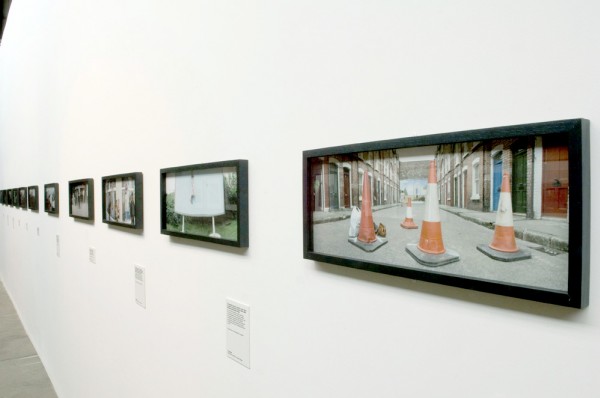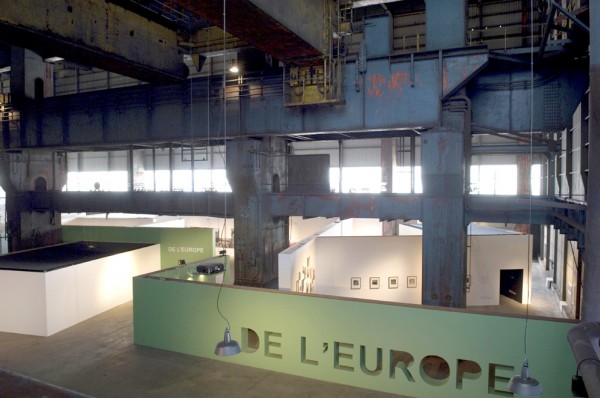
De l'Europe
The Family of Man était le point de départ lorsqu'il a été décidé en 1996, de mettre en place le programme mosaïque. Le fort discours personnel de Steichen, qui réunissait à l'époque 503 œuvres de 273 photographes dans un contexte de communication humaniste, reste une des clés de l'énorme succès de l'entreprise. Mais les choix et méthodes d'antan, l'idée de concevoir à l'époque une image globale de l'homme comme réponse à une période particulièrement marquée par les troubles et les renouveaux d'après-guerre, méritaient analyse et repositionnement dans un contexte d'actualité. S’imposait l’idée d’imaginer, d’explorer de voies nouvelles. L’Europe constituait de toute évidence un enjeu majeur, tant sur le plan politique qu’économique. Et la photographie apparaissait comme un médium pouvant éclairer de façon pertinente la construction de cette communauté nouvelle et très complexe. Ce thème s'est donc imposé dans le cadre de la conception d'un programme d'aide à la création et à la recherche. D'autant que mosaïque était initié par le Luxembourg, situé géographiquement au centre de l’Europe. Dès la première année, une centaine de projets ont été soumis à l’appréciation des membres du jury - signe que le choix du thème était juste -, et le nombre de demandes de candidatures n'a jamais décru. 25 projets photographiques de grande qualité ont pu être complétés jusqu’à nos jours. Le terrain d’investigation des photographes est large : les conflits (notamment en Bosnie, puis au Kosovo), la question du territoire, la désintégration récente du bloc de l'Est, les désirs d'indépendance, les nouvelles frontières, les migrations, l'exclusion sociale, les différends plus anciens (Irlande ou au Pays Basque), les questions religieuses ou économiques, les traditions, le changement du paysage social et urbain… Des démarches photographiques très diversifiées ont été soutenues et donnent en même temps un aperçu sur l’évolution de la création photographique de la dernière décennie.
2007 sera l’occasion pour montrer sous forme d’exposition la totalité des projets. Le défi sera de présenter chacun des travaux, tout en ordonnant à travers la photographie une vision de l’Europe à la charnière de deux millénaires, de situations et de faits qui participent de sa construction, une vision ouverte, diversifiée, aussi complexe que l’Europe elle-même, qui concerne à la fois le continent et l’approche qui peut en être faite. L’exposition sera accompagnée d’un ouvrage regroupant les 25 projets photographiques et 3 recherches théoriques.
Avec :
Johannes Backes Eva Bertram Elina Brotherus Thomas Chable Ad van Denderen Véronique Ellena Joakim Eskildsen Patrizia di Fiore Moreno Gentili Claudio Gobbi Lori Grinker Rip Hopkins Anthony Haughey Jean-François Joly Pelle Kronestedt Nicoletta Leonardi Gilles Mora Cristina Nuñez Gabor Ösz Gilles Peress Mark Power Anne Rearick Victor Sira Alexey Titarenko Albrecht Tübke Ute Wrocklage Marco Zanta Thomas Zika

Land of Asylum, Land Of Exile, Roma Europe
A photographic portrayal of modern-day Roma
by Jean-François Joly and Rip Hopkins
Recently, the Romany Union has been recognised by the EC as an organisation that represents Roma in Europe and, as far as possible, articulates their common grievances. With a new generation of intellectuals in the lead, they are finally taking the initiative and starting to mobilise in defence of their rights. The European media has consistently failed to confront the "gypsy problem". Our photographic investigation is therefore crucial to highlight their predicament. Through portraying their every day lives we will depict the difficulties that they face and the way they respond to them. Separately, we will follow and share the Roma’s daily life in the street, in the parking lots, in the schools and in the housing they have been attributed with the aim of settling them. The chosen countries of destination are Germany, France, Greece, Kosovo, Ireland, Czech Republic and Romania in order to show both their trans-national nature and the differences emerging between the communities. These seven countries will also indicate the varying political treatment received by the Roma and how their own culture compares to that of the locals. We have chosen these countries due to their specific behaviour and approach, culturally or politically, that they have adopted concerning their Roma communities. The photographic work performed in these different locations will constitute what is our vision of today’s Roma Europe.
Our portrayal will be presented through two complementary forms of photography. Using a panoramic format, in black and white and colour, Rip Hopkins will reveal the context and structure of the Roma’s lives. Jean-François Joly, taking black and white portraits with a 4x5 chamber, will explore the individuals more intimately. Our work will also present a series of portraits of the most significant figures in the political struggle for their rights. Though less splendid than the Roma of medieval Europe, the image of modern-day Roma is as dramatic and intriguing as ever.
11 photographs 20x50cm ink jet printed
